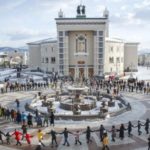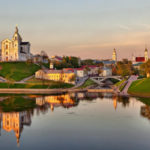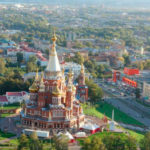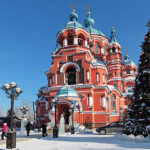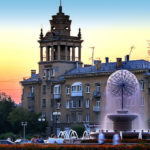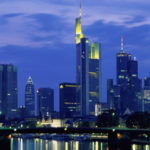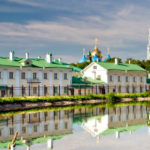Interesting facts about Khabarovsk
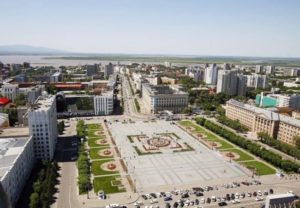 Khabarovsk is one of the most significant cities, along with Vladivostok, in the Far East. This is not only a major economic center, it is also a real transshipment point for an endless flow of goods coming from Asia by land. Founded as a military post, over the years the city has grown and turned into a very important neighborhood relationship.
Khabarovsk is one of the most significant cities, along with Vladivostok, in the Far East. This is not only a major economic center, it is also a real transshipment point for an endless flow of goods coming from Asia by land. Founded as a military post, over the years the city has grown and turned into a very important neighborhood relationship.
Khabarovsk is one of the largest centers of the Far East in the field of culture, politics and education.
Khabarovsk is located very close to the border with China – in order to get to the nearest Chinese city, it is enough to cover 65 kilometers by the ship departing from the river station.
In Khabarovsk, the federal Ministry for the Development of the Far East and the headquarters of the Eastern Military District are located.
There is a popular urban legend according to which under Khabarovsk is a real underground city with streets, buildings and a network of tunnels. Some townspeople believe that many buildings of Khabarovsk are interconnected by underground passages, and secret passages allegedly lead from the city to the Amur River. Nevertheless, diggers and other adventurers have not yet been able to find any trace of this metropolis beneath the surface of the Earth.
Khabarovsk enthusiasts have been trying to find a treasure for almost a century, according to legend, buried by a wealthy Chinese woman near the house number 55 on Komsomolskaya Street. The rich man was killed the same day and carried away the secret of his treasures to the grave.
Khabarovsk repeatedly took first place in the ranking of the most comfortable cities in Russia. It was also recognized as one of the most favorable for the business of megacities of the Russian Federation.
Residents of Khabarovsk like to ask visitors a tricky question about the hand in which the hat of Erofei Khabarov, whose monument is installed near the station, is holding. This is a trick question, since in fact the cap is from the explorer on his head.
In Khabarovsk, on the site of Lenin Square, where people like to rest townspeople, in the XIX century there was a cemetery.
In Khabarovsk, a city bike is circulating about the fact that the monument to Yerofei Khabarov originally stood with his back to the station, and then the city authorities unfolded it, as the monument met visitors in an inappropriate way. In fact, it is not so – the monument always had its present position.
One of the iconic parts of the city, the Khabarovsk cliff, went down in history as the place of mass execution of artists – in 1918 Cossacks shot there 16 Austro-Hungarian musicians, who found weapons and ammunition.
In Khabarovsk, there is an abandoned building, which the locals nicknamed the “Tower of the Infedel”. About the house go the most wild and bloody rumors, although in fact it was to accommodate only a compressor station to supply air to the tunnel, built in the 1930s in an atmosphere of high secrecy. After the construction was completed, it turned out that the tunnel had enough air and from normal ventilation, and the project was abandoned as unnecessary.
Monument to Governor-General of Eastern Siberia Nikolai Muraviev-Amursky, located in Khabarovsk, flaunts on a denomination of 5 thousand rubles.
In one of the houses on Turgenev Street in Khabarovsk, the famous writer Anton Chekhov, who was on his way to Sakhalin, stayed, and in the building opposite the member of the assassination attempt on Emperor Alexander II.
The bridge across the Amur River near Khabarovsk was for a long time the longest bridge in Europe (also, check Interesting facts about Eastern Europe) and to this day remains the longest bridge in Russia – the length of this impressive building is 2.6 kilometers. In 2016, the Amur Bridge celebrated its centennial anniversary.
In 1920 in Khabarovsk, an officer of the Far Eastern White Army handed over to the Japanese military for a temporary storage part of the gold reserve of the Russian Empire (20 boxes of gold coins and two gold coins). These values have never been returned.
